AudioCulture
The noisy library of New Zealand music
Te pātaka korihi o ngā puoro o Aotearoa
Bressa Creeting Cake
aka Breast Secreting Cake
Edmund McWilliams first met Geoff Maddock in art class at Avondale College. Geoff was listening to REM and Tears For Fears at the time, and just beginning to learn guitar. Ed was listening to punk rock, and had already been in two bands, Egz and The Gutter Wizards. Drummer Joel Wilton came to their attention playing a Poison cover in a group at a school talent quest. Even then Joel was an eclectic musician, always searching for new sounds and rhythms. The trio embarked on a singular musical adventure into a weird world all their own.
“When I first met Ed in third form at college he was already way ahead of everybody else musically and technically,” says Geoff. “He wasn’t a great player in a conventional way, and he never was. But he was doing brilliant things. He had built a radio transmitter, and ran a little station from where he lived in Mt Albert. He had rigged an old tape machine to do sound-on-sound recording and somehow made whole band recordings, albums.
“Though he was obviously influenced by all sorts of bands and sounds, what came out of him was unlike anyone, never specific to a genre or very easily definable ... right from the start he had his own sound. He introduced me to a lot of music. The only pop music I really knew was what I might hear on other people’s radios. At my parents’ house it was all orchestral music. A bit of the Beatles occasionally.”
Ed had previously taken cassette recordings of The Gutter Wizards up to Auckland’s bFM, where they had good airplay and response. Breast Secreting Cake continued this trend and had a string of top 10 placings on the station’s playlist. This, along with sporadic gigs, brought them to the attention of various music people around town. Karyn Hay was quite taken with them, and took the band to meet Roger Shepherd at Flying Nun Records – he wasn't impressed.
Andrew Fagan (The Mockers) introduced them to Malcolm Smith, the keyboards/programmer from electronic dance-pop band The Fan Club; he gave them access to his Maidstone St. Studio in Grey Lynn.
“After a while Malcolm just wasn’t there any more, he kinda gave us the run of the place,” says Ed. “A bunch of the bFM songs actually came out of there. Our bass player at the time, Dave Nielsen, made a kitset 8-channel fader automation setup, and we put that in place at Maidstone St. So we made lots of music, but we didn’t really think of trying to sell it.”
Free studio access allowed the band to disappear down a rabbit-hole
The free studio access allowed the band to disappear down the rabbit-hole of production techniques and recording experimentation in a small but professional studio environment, an incubation period that would serve them well later on.
Then along came Nick Morgan, offering to manage the young band. He extracted them from their Maidstone St. womb and took them to the new Revolver Studios on Pah Road, in the Auckland suburb of Royal Oak.
Ed: “A huge studio in a 1950s modernist brick building, it used to be an indoor cricket centre. It had a massive Neve console and really big studio monitor speakers and Studer tape machines. So we started rehearsing and recording there ... but there was just something wrong, it just didn’t work. I don’t think we were good enough at that point to fill that big, ultra-professional palette. The only thing that we put out that we recorded there was our version of ‘Ring Ring’ for the Flying Nun ABBA record [Abbasalutely, Flying Nun Records, 1995].
“CDRs [recordable compact discs] had just come out, and we were the first band to bring one into Flying Nun. Bands had always brought in cassettes. I remember [Flying Nun employee] Natasha Griffiths going ‘Wow’ ... I don’t think they were particularly impressed with the track, but they were impressed by the format.”
After a gig at Auckland’s Powerstation supporting Australian band Hunters & Collectors, Paul McKessar and Lesley Paris – who were now managing Flying Nun’s New Zealand affairs – came backstage and offered to sign the band. “That was our rock and roll moment,” says Ed. “‘Great gig, we wanna sign you!’ We were like, whatever, yeah ... then after they left, WOOHOOO!”
“It was all pretty amazing,” says Geoff. “Yet I know we felt like we were good, we deserved it. I was excited and amazed, but in my heart I thought it was crazy. I could barely play and sing at the same time! Was I even a musician? And what was with our ridiculous name? But also... YES!”
So then it was time for Breast Secreting Cake to record an album. Flying Nun requested the band change their name to something not quite as ... glandular, so they went with a phonetic translation of sorts and became Bressa Creeting Cake, the individuals adopting parts as last names: Joel Bressa, Geoff Creeting, and Ed Cake.
They settled on recording with Joe Gubay on Auckland’s North Shore, in a rambling Cheltenham Beach house that had once been a dance hall named Lover’s Lane. Ed recalls: “Every person I talked to about recording at this time would say ‘Joe Gubay’s got the best gear, Joe Gubay’s got the best studio but no one can record there, Joe Gubay’s mental’ ... there was this myth about Joe being unapproachable, like he’s a weird recluse who lives out on Cheltenham Beach in this big old mansion and is crazy. So I thought, I gotta meet this guy ... and Joe was lovely! A very radical left-wing thinker, though. Very anti-corporate.”
“The album ... it took a while,” says Geoff. “Sometimes something at Joe’s needed repairing, or we would blow something up or maybe Joe just got sick of us. But Joe was a big influence, and the enthusiasm and love he brought to the songs was wonderful. He seemed to totally believe in what we were trying to do, had great faith. We could take a break and walk on the beach, go swimming ... I wish we had more photos of that time. Each song was recorded differently, tons of experimentation. If we rehearsed the songs beforehand, well most of that probably went out the window and it was ‘start again’.
“The environment changed us. The old instruments, the kids running around, the chickens in the yard, the cicadas. It sounds funny now but I had barely been to the North Shore before. Going over to Joe’s was a special thing, it seemed a haven, a summer isle. Also, Joe was like no one I had ever met. He came from a musical place somewhere between Bach and Jimi Hendrix, he seemed part of an unusual matrix of other worlds.
“The studio had this homely, library smell. It smelled of books and oiled wood as much as hot electrical things and amplifiers, but with the sea air always finding its way inside. We raided his fridge constantly. The record mostly was made over a summertime. Some songs were piece by piece. Others, like ‘They Write Words To People Who Are Dead’, were done in a day, built like a Frankenstein’s monster from what parts lay around. Actually I don’t think any song was like a vision realised. More of a journey taken and made cohesive by the end somehow.
“The mixing was incredible. The three of us at the desk doing the faders, Joe at the tape machines. And there was a lot to deal with, tracks filled up with all sorts of things, changing through the songs. It was this edge of the seat thing, exciting but with this realisation that the song was now to be frozen in amber. It was its last listen as a morphing dream, and the first as an actual song. Eventually we were finished and I remember when we were doing the mastering, back at some place on Ponsonby Road, that I thought some era was over. We had become something new in that time, and it was hard to be what we were before we began.”
The album is a collection of truly great and often surreal songs, with beautifully recorded arrangements veering from the ridiculous to the sublime, driven all the while by Joel’s pan-global percussive drumming. Stylistically diverse (to say the least), the album at times sounds like Os Mutantes have been reincarnated as brilliant children and let loose in a studio while high on the jelly crystals from ‘The Chip That Sells Millions’, while ‘Superstation’ resonates like a demo recording of Steely Dan replying to Headless Chickens’ ‘Gaskrankinstation’.
The band was labelled by lazier music writers as merely “quirky”
The band was labelled by lazier music writers as merely “quirky”, a pigeonhole that fails to acknowledge compositions as complex-yet-catchy as ‘Papa People’, ‘The Chip That Sells Millions’, ‘Egyptian Tanker’ and ‘Palm Singing’: tunes which would be better filed alongside the less prog moments from the early Split Enz. Geoff and Ed’s voices work in harmony through much of the material, and the blend of Geoff’s plaintive, reedy delivery with Ed’s breathless falsetto is one of the best male vocal combinations in recorded New Zealand pop music.
Mostly the album was very well received, and over the next few years it percolated its way into the minds and hearts of a large chunk of the New Zealand population, most particularly the creative community. At the time it seemed most Auckland bands fell easily into a few camps: long-haired pseudo-grunge acts, bland radio-friendly pop, or the fresher urban/Polynesian inner city sounds. Bressa Creeting Cake were musically hard to categorise, and mysterious to boot. In other words, a welcome breath of fresh air.
For live gigs they recruited various bass players.“One time we had a bass player called Jared Johansen,” says Geoff, “lovely guy, but more from a riffing funk kind of metal-ish background. We would have these bass players come and go: Dave Neilsen, Jared, Karl Harris. They were all so different! Their distinct sounds and personalities were a fantastic contribution, and so different from each other. I think at the time I failed to make the most of what they had to offer. And in between them I would go back to the bass and we would be a three-piece again. I would play whatever was needed. We sold my guitar at one point to get a PA to rehearse with, so after that I wasn’t on guitar anymore!”
The trio then decamped to a more beatnik-laboratory environment in the close confines of The Cake Tin. The old Crittel Windows factory in Mt. Eden – down the long right-of-way known as Coles Ave – had long been a studio for shooting commercials, short films, and music videos. The run-down industrial building was partially revamped and carved into more manageable chunks in the mid-90s, and the larger rear section was taken by lighting designer/music video director Steve Morrison, who had christened the space DFK. The band loved the ramshackle industrial environment, and sub-let an iron room (formerly a hopper where silica was separated from sand to make glass) as a recording studio. They set up a basic Otari 8-track machine and again had the freedom to follow their collective noses without any studio time constraints.
Steve Morrison directed a clip for ‘Papa People’, a standout track off the album. The band was not featured in the video at all, which was a sci-fi romance exploring the relationship between a young woman and a human-sized weta. Their friend Michael Keating – who had become their manager by this point – also directed a clip, for the song ‘Palm Singing’. This featured actor/comedian Jonathan Brugh miming the vocal and instruments ... years later many people still think he was Bressa Creeting Cake. The video featured the monk-robed band playing in front of a huge bonfire behind the studio, which got a little out of control, and the fire department were called (it wasn't the last time that Ed had fire problems).
Nigel Gatward also put together an impressionistic video for the song ‘Egyptian Tanker’, featuring images of time-lapse clouds and a stranded spaceman-like figure surveying a desert landscape. When it comes to pop-personas, this kind of mysterious guise is relatively rare in New Zealand: we tend to want to put our faces about. But for Bressa Creeting Cake, the Residents’ theory of obscurity worked very well. Ed was nominated for Upcoming Best Male Vocalist in the 1997 Clear Music Awards. Ed: “We both sung all the time, how did they know which one was me? And why did I go along with it? That ego thing …” Geoff: “Ed was nominated and he has a great voice, why not!”
A HOUSE IN GRAFTON WAS A HUB FOR MAD YOUNG ARTISTIC FOLK
These were halcyon days for the band. They had released an album to critical acclaim, and were working in a studio all their own where they could try anything they liked. The band had come of age as part of a larger social milieu centred around Parkfield Tce, Grafton.
“The house was a hub for mad young artistic folk,” says Ed. “We pretentiously thought we were a generational extension of James K Baxter in his Grafton days, and used to mooch around his old haunts. There were a lot of comedians: Jonathan Brugh and Jason Hoyte, Jemaine Clement, writer Lee Baker, Te Radar; filmmakers Robert and Duncan Sarkies; actress Willa O’Neill and writer-director Paulo Rotondo; artists Martin Lark, Jonathan Brown, Jason Dufty, Roger Murray ... plus all the idiotic musicians. God, it was a bit of a boys club! A lot of these guys met at Catholic boarding school, Sacred Heart in Glen Innes. I remember there was a lot of chess, pranks calling talkback radio, setting things on fire, David Bowie, and drugs.”
The band decided to play an album launch party, and chose Alexandra Park Raceway for the event. They sponsored a race on the night (The Bressa Creeting Cake Mobile Pace), and the winning horse and its bewildered owners had their photo taken with a somewhat worse-for-wear band. Ed says this night was a bit of a tribute to his dad, who was always involved with racing and racehorses. The band were on form and sounded great, with a well-dressed and appreciative crowd egging them on. Geoff says, “That night was incredible. It was just strange and wonderful and the best party. People making bets while we played, winning races. That crazy photo out on the track.”
The going wasn’t always easy, however, and there was an escalating creative rivalry in the mix. “Songwriting was pretty competitive between me and Geoffrey. There was often tension during recording. Once Geoffrey hit me in the head with a steering wheel lock. Another time he reversed into me with his car and trapped me between his bumper and another car. I wasn’t very nice either, but I suppose my aggression was more psychological. I threw his guitar out of the car window on the motorway. Joel was always really nice.”
THERE WAS OFTEN TENSION DURING RECORDING SESSIONS
Geoff responds: “I don’t remember hitting Ed with a steering lock. Or the car thing. Not saying it didn’t happen. Sure we had differences and it was pretty stressful at times. I think it was that we had different ideas as to what we should be doing. Ed wasn’t really enjoying live playing, being the frontman and we didn’t do much of that, and I think I saw that as something we just needed to do but I couldn’t necessarily lead that way.
“We were in a wrestle with ourselves, each other, and the greater musical world about what to be and what was good and authentic. It had to be unique. It had to be our own path. but then it comes down to deciding what that path is. But Ed was our leader, at the start and always. He knew more and he went to engineering school and made fantastic recordings and had the visions of how things should be and he wrote great songs. Many visions, changing ideas. I sort of galloped along beside him, Joel too, but more soberly, perhaps driving his big old blue Triumph.”
Around this time Bressa Creeting Cake toured in support of The Mutton Birds, recorded new material and played a bFM live-to-air from the old Shortland Street studios.
Eventually the Coles Ave location closed down, and the band relocated to Gore St in the central city, above a peep show. There they made a home for Tim Finn’s recording studio equipment after his return from Australia. The expansive environment was echoed in the widening interests of the band. Geoff started writing with Kirsten Morrell on a project which would become the commercially successful Goldenhorse, while Ed was working with both Finn brothers and on his own solo material. When they closed shop in Gore St, Geoff and Tim took the equipment to a location in Waiatarua, at the top of the Waitakere Ranges. Ed and Geoff had stopped writing together, and Bressa Creeting Cake was no more.
Bressa Creeting Cake reunited for a tour in 2009. Joel had become the deputy principal at Havelock North High School, so Geoff and Ed travelled there to rehearse. Ed: “We practised in the school, it was like going back in time, sneaking outside for cigarettes. We did 20 songs, it was really good! It was a three-piece, and because both Geoff and I sing it was a tight and powerful show, and a great, fun tour.”
Flying Nun Records celebrated its 30th anniversary in 2011, and soon after started releasing some handsome retrospectives from its catalogue. In mid-2017 Bressa Creeting Cake’s album was made available as a double-LP in a gatefold sleeve featuring B-sides, rarities, and other previously unreleased material.
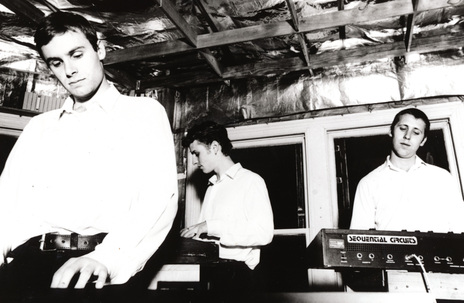
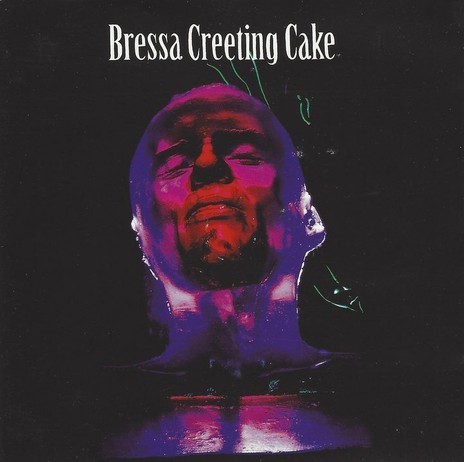
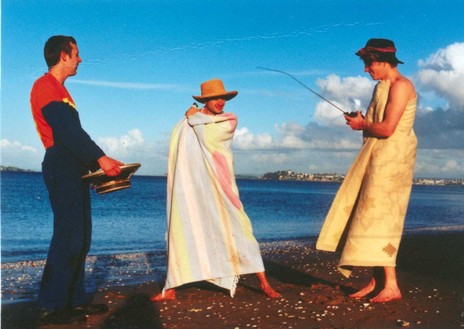
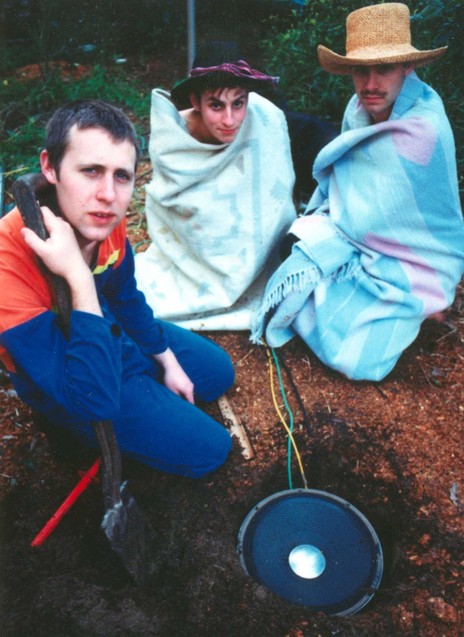
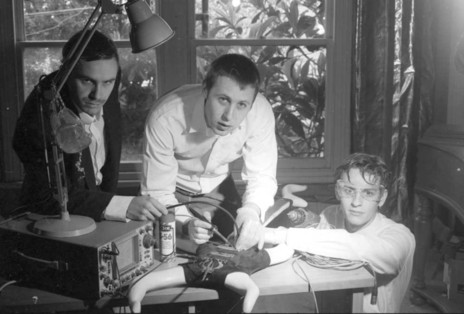
Geoff Maddock had another project between BCC and Goldenhorse. The delightfully-named General Hen were a Geoff-driven project that recorded some unreleased material.
Apart from managing Bressa Creeting Cake, Michael Keating also looked after Sugar and Spice, the comedy duo comprised of Jason Hoyte and Jonathan Brugh. He went on to manage Anna Coddington’s bands as well as Goldenhorse.
Visit our sister site
NZ On ScreenMade with funding from
NZ On Air


